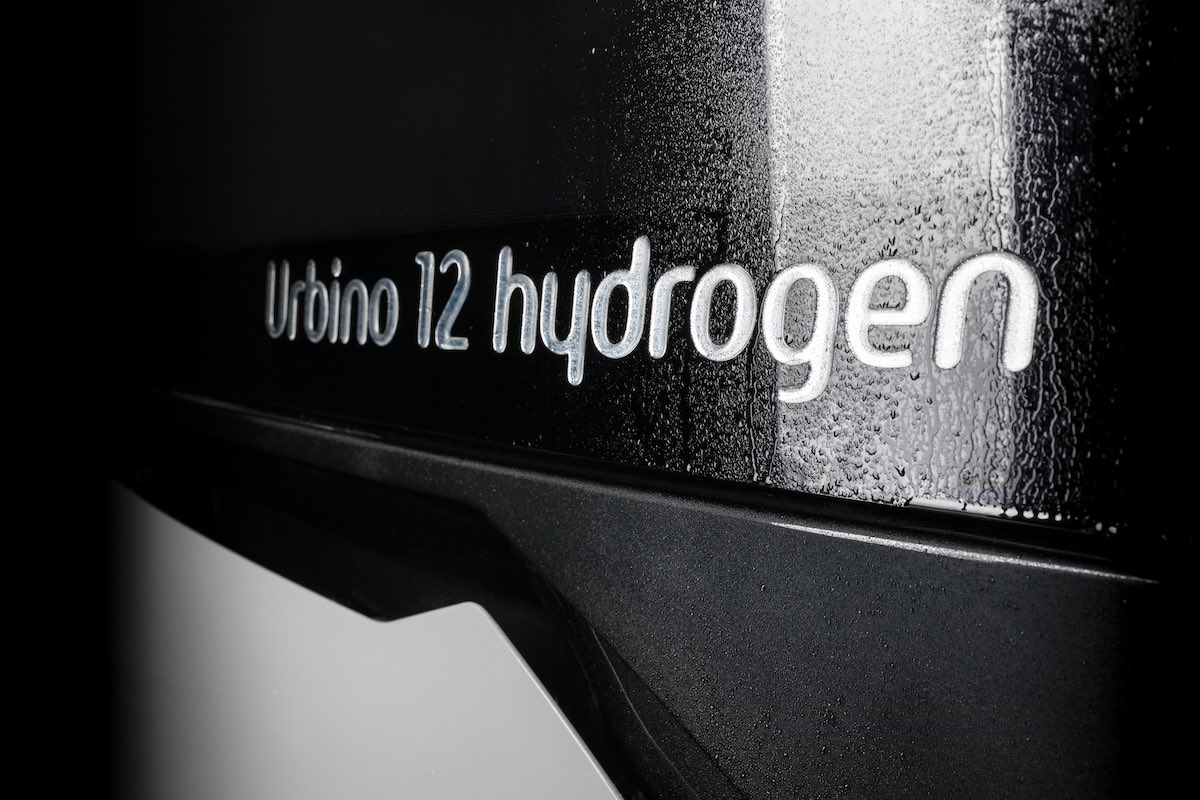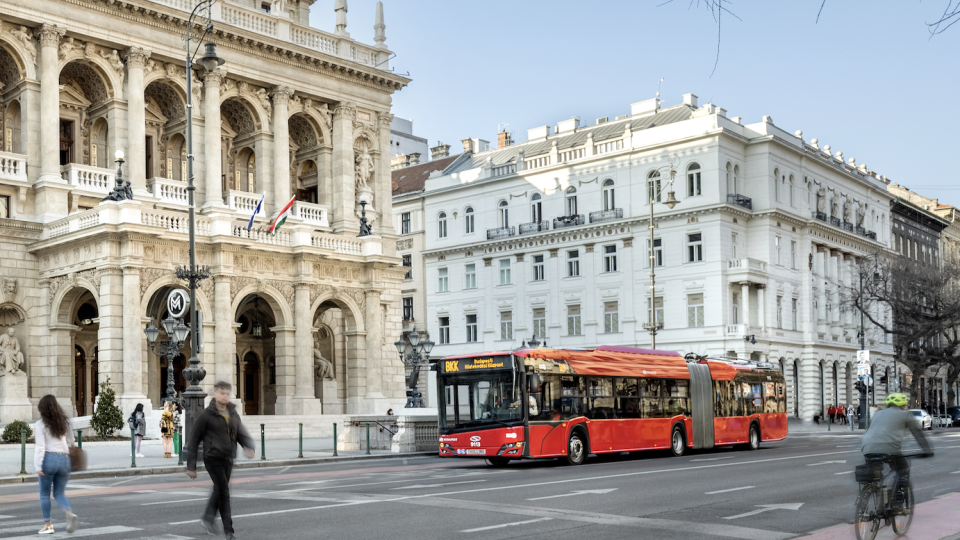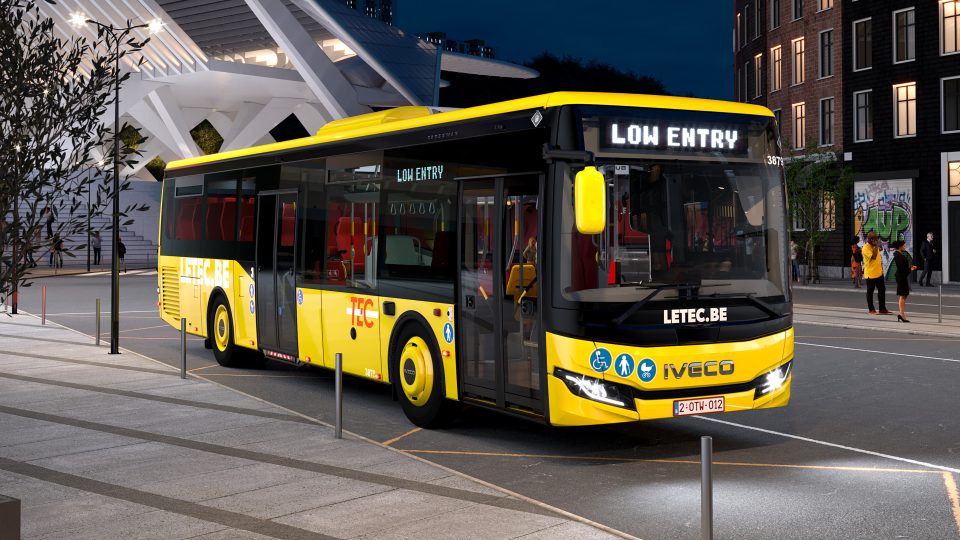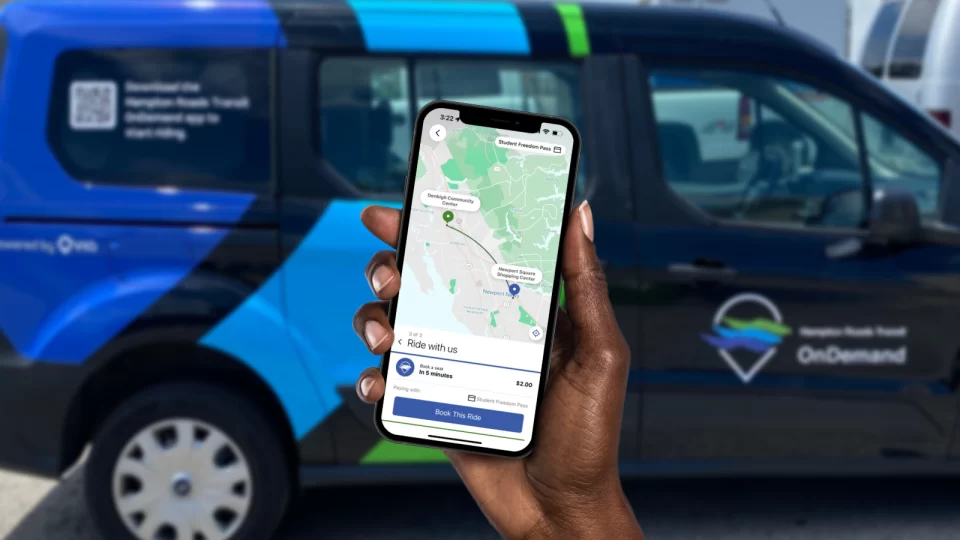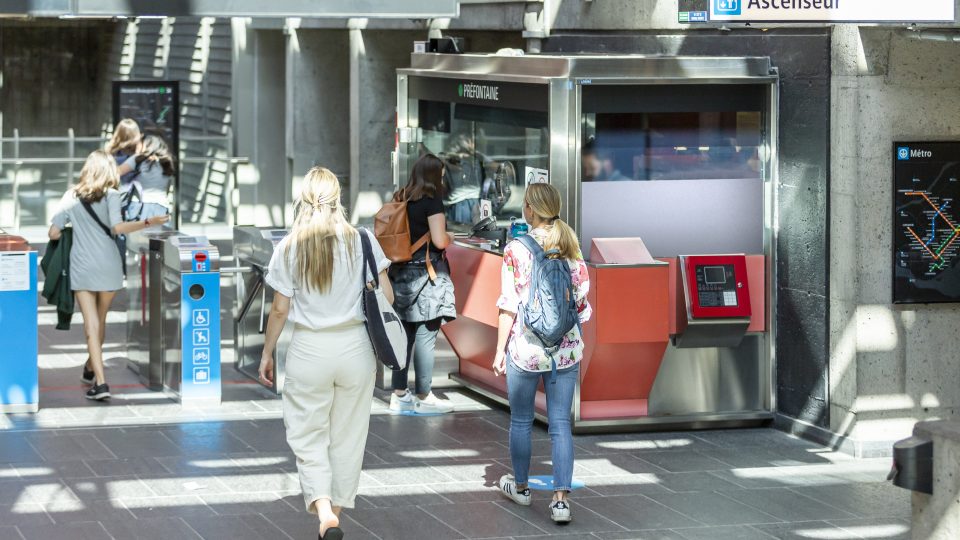Lights on Solaris fuel cell bus: the European leader of H2 in public transport will be soon joined by a 18m version
2021 has been a watershed year for fuel cell buses: with 158 registrations, that market grew of 236% in Europe. Main player in continental Europe, Solaris with 37 registrations of its fuel cell bus, the Urbino 12 hydrogen. In the same year, the company has delivered to customers a whopping 54 vehicles equipped with fuel cells. What […]
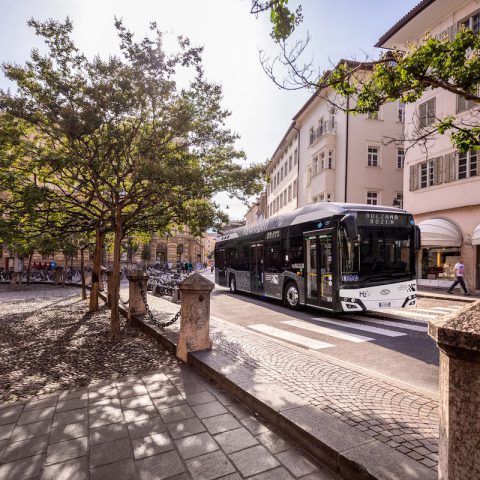
2021 has been a watershed year for fuel cell buses: with 158 registrations, that market grew of 236% in Europe. Main player in continental Europe, Solaris with 37 registrations of its fuel cell bus, the Urbino 12 hydrogen. In the same year, the company has delivered to customers a whopping 54 vehicles equipped with fuel cells.
What is very interesting, the 12-meter hydrogen-powered bus will be soon joined by a 18-meter version, a real first in this segment: the launch of the articulated Urbino 18 hydrogen bus is slated for September 2022.
Solaris fuel cell bus, a series of contracts achieved
Last year Solaris sold a total of 1,492 vehicles and ranked first in the European zero-emission bus market with a 15.1% market share. From 2012 to 2021 the Polish brand has been the leading manufacturer of zero-emission buses in the European market with a market share of 15.5%
The latest contract for the Solaris Urbino 12 hydrogen was signed in Upper Bavaria, with 10 vehicles scheduled for delivery by March next year, while the first fuel cell bus fleet with Solaris’ brand was launched in Bolzano, Italy, in May 2021 (the delivery of the 12 vehicles followed the very first order ever secured by Solaris for its fuel cell bus, signed in June 2019 just a few days after the world premiere at UITP Summit in Stockholm). Largest order so far? 20 models commissioned in the Netherlands by Connexxion, which also belongs to Transdev group.
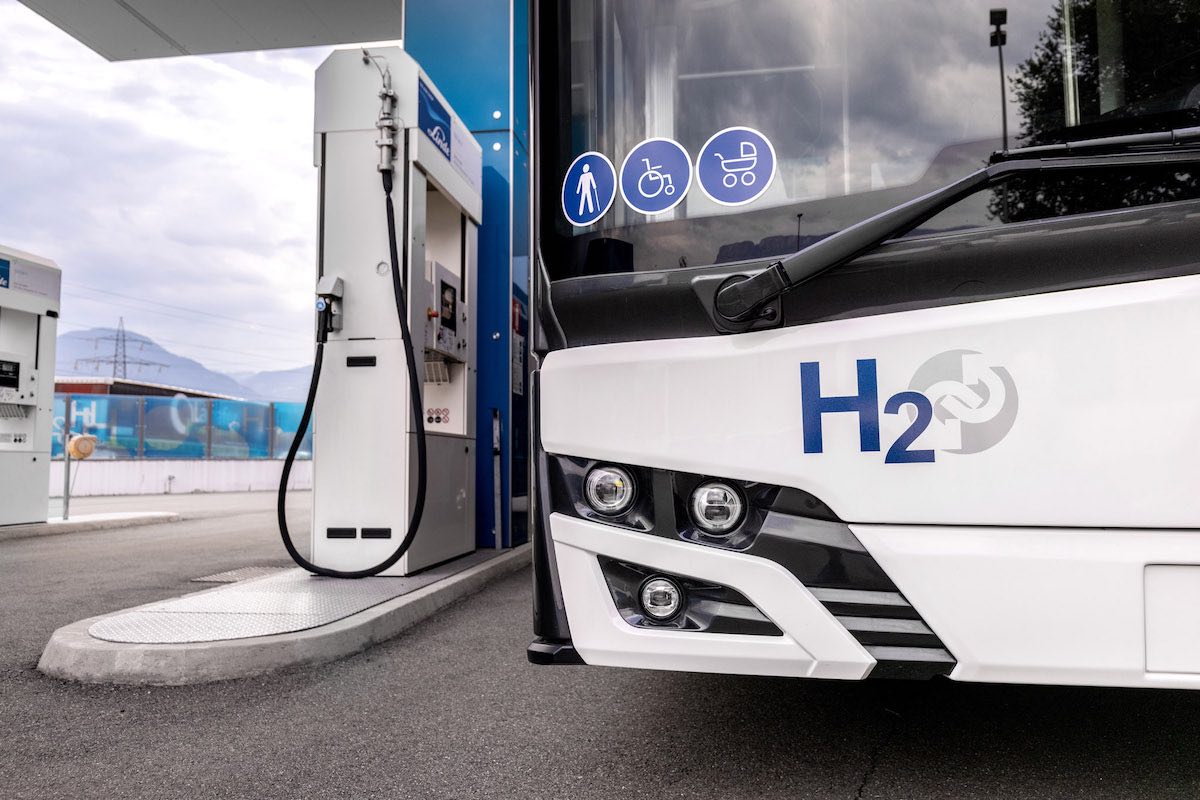
Also this year, in early March, a 5-units fleet was ordered in Mallorca. Austria joined also the ‘team’ of countries that will soon witness the Solaris Urbino 12 hydrogen in operation, with ÖBB Postbus, the biggest bus operator in Austria, landing in late 2021 a deal for the delivery of five vehicles in Villach, where Solaris held a test in spring. In the domestic market, MZK in Konin will be the first public transport operator to add a hydrogen bus to its fleet.
Only water out the Urbino 12 hydrogen
A focus on the technical specs: Solaris fuel cell bus is a zero-emission bus that combines a high-performance small battery with a fuel cell, the latter of which powers the battery.
The Urbino 12 hydrogen is fuelled with power generated by a 70 kW fuel cell. Five hydrogen tanks mounted on the roof, and located longitudinally above the vehicle first axle, ensure a capacity of 312 liters each, i.e. 1,560 liters totally, equal to approximately 37 kg.
Refueling follows a rate of 6 kg per minute: the time necessary to fill up the tank is just over six minutes. Which, of course, also depends on the technological level of the refueling system. The refill nozzle is located on the right side, close to the front door. The bus has a range of around 350 kilometres, manufacturer says.
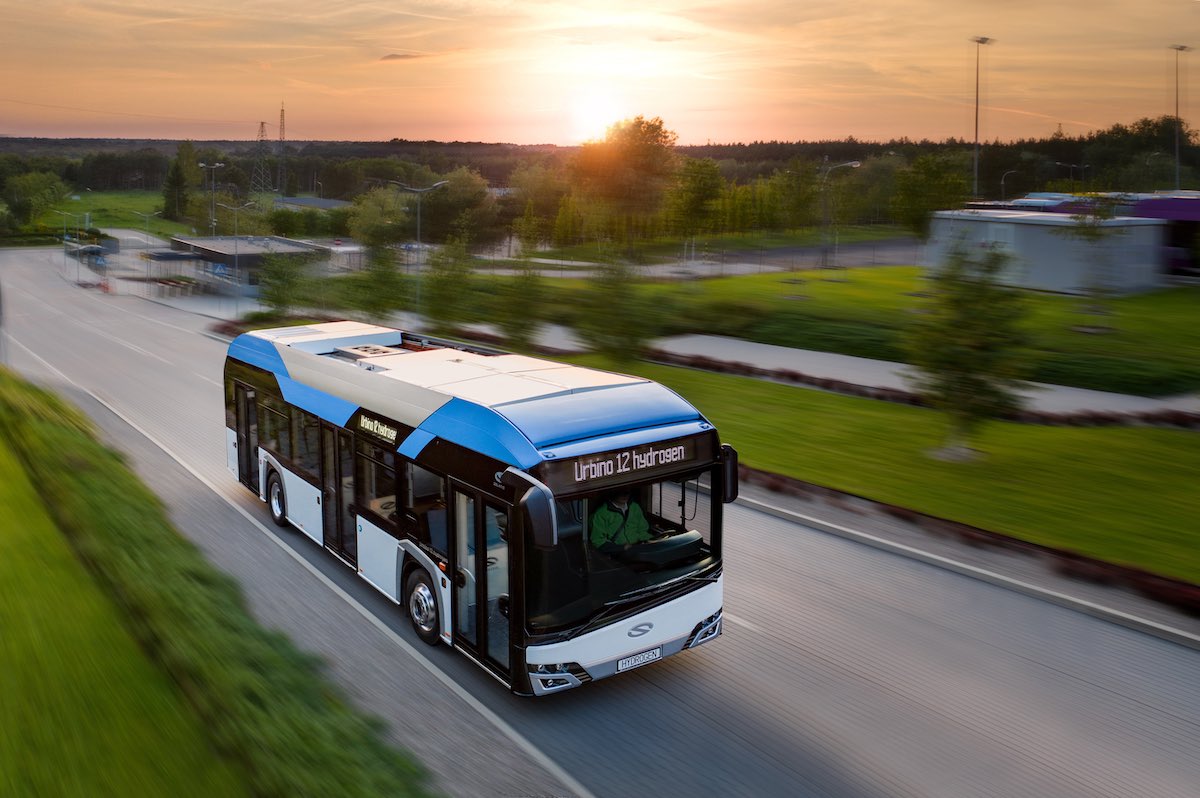
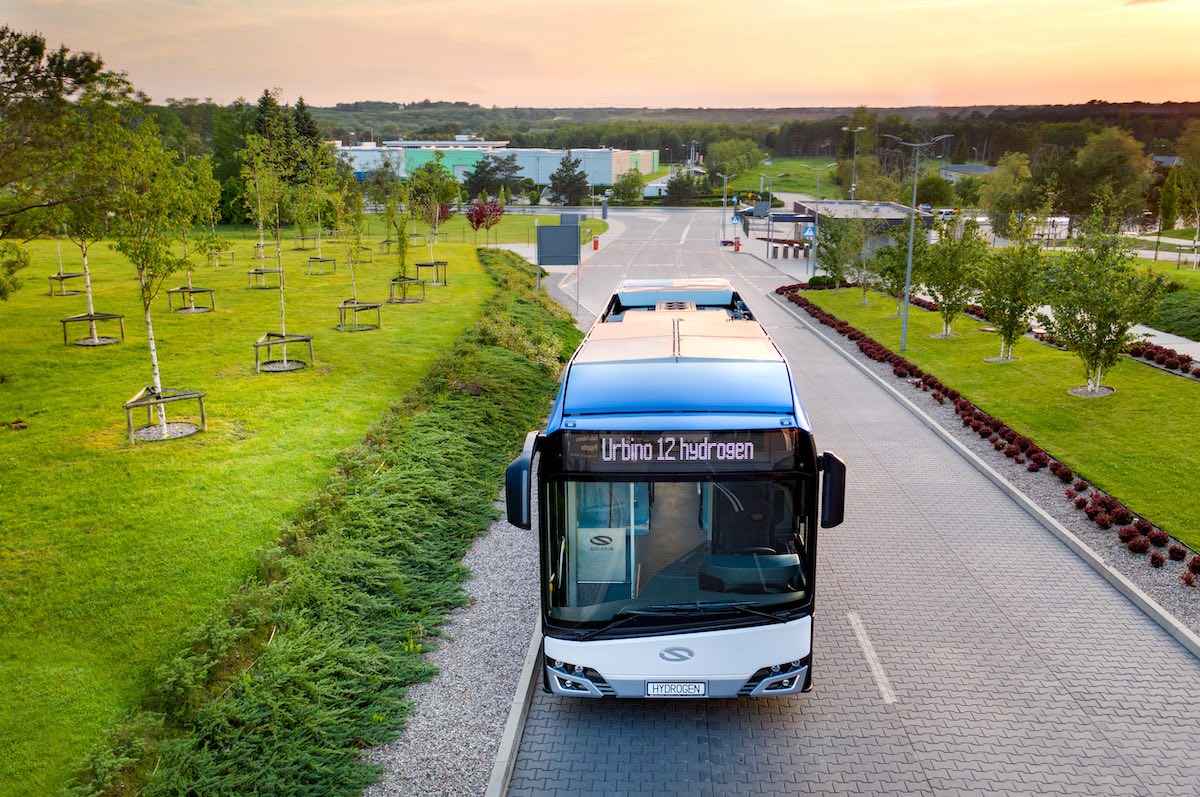
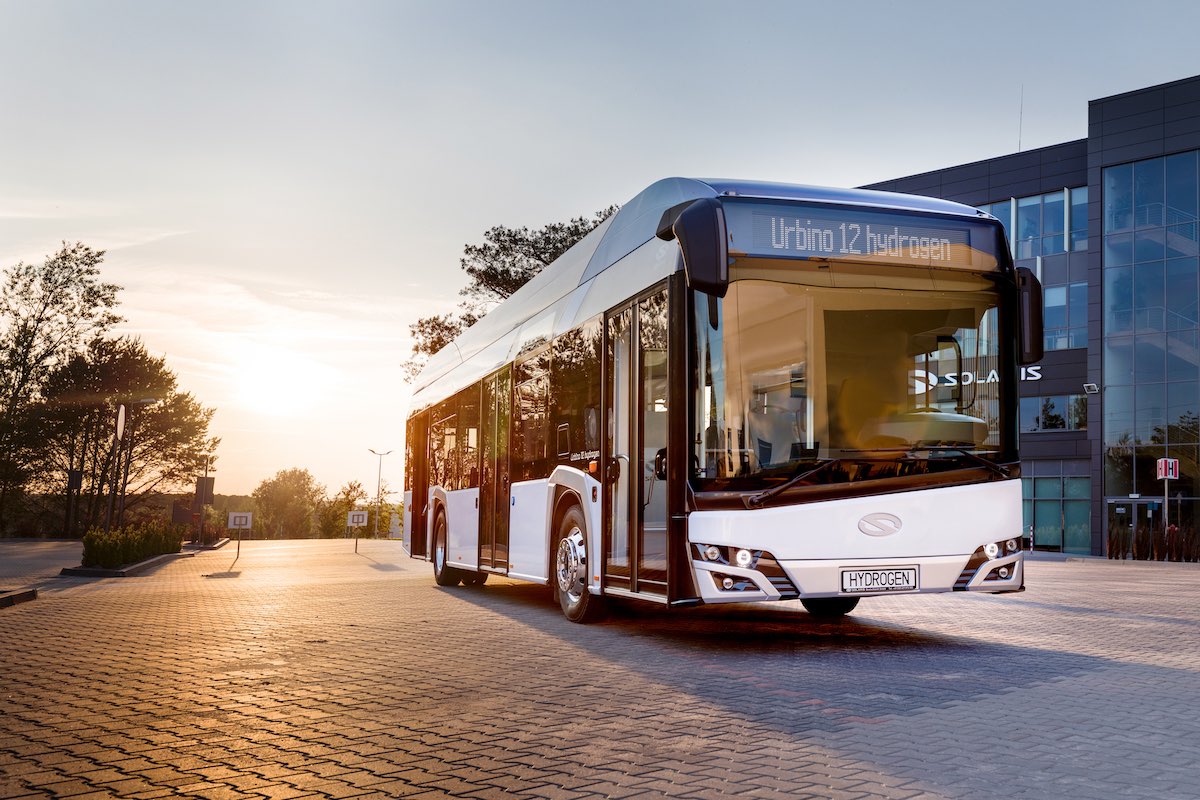
The bus is characterised especially by a low level of noise and lack of vibrations while moving, still manufacturer points out. Moreover, the only product of the chemical reaction, which takes place in the hydrogen fuel cell is water. A refilling time takes couple of minutes, and thus will ensure the flexibility and elasticity to the vehicle’s operator.
The internal lighting is full LED. The air conditioning is controlled by a system characterized by the use of CO2 refrigerant and heat pump. The system uses the residual heat of the fuel cell to heat the passenger compartment. Noteworthy is the cockpit, which is entirely digital and equipped with touchscreen technology, as usual in the new generation Solaris buses.
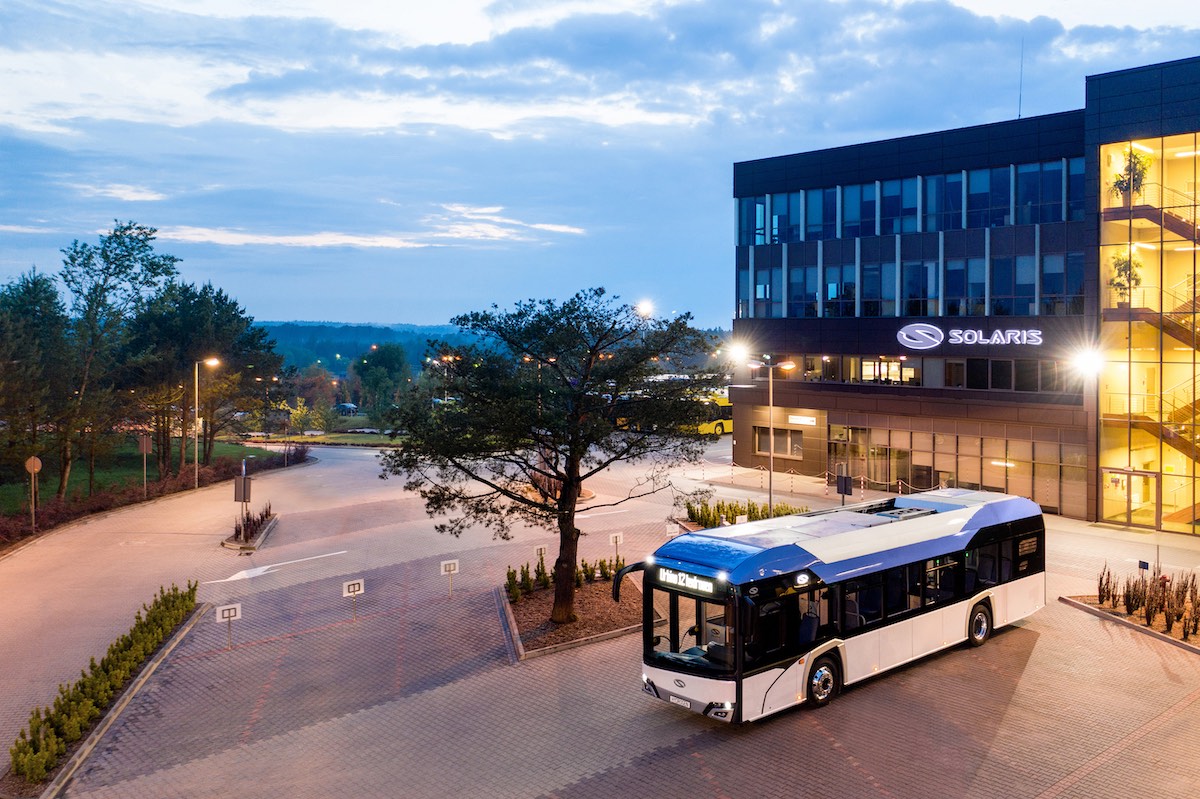
LTO battery for Solaris fuel cell bus
The hydrogen Urbino has a structure substantially similar to that of the battery-electric version. A crucial difference: the hydrogen tanks on the roof and the already-mentioned fuel cell module. Drive system? The electric axle with two 125 kW motors, in the case of the hydrogen vehicle, is the only choice.
The size of the storage modules also distinguishes the hydrogen-powered Urbino from the battery-powered one. Around 30 kWh batteries are mounted on the fuel cell Urbino in the name of the Solaris High Power battery kind, the one designed for in-line recharging by virtue of its accentuated maximum charging power.
